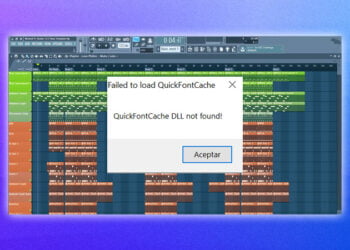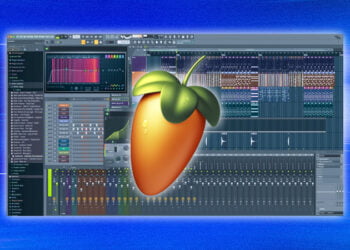If you’re a music producer and you’re interested in learning how to export midi from FL Studio, you’ve come to the right place!
FL Studio is one of the world’s most popular music-making programs, so it’s no surprise that many producers are eager to learn the tricks of the trade.
Exporting midi from FL Studio is a great way to maximize efficiency and keep your workflow organized; this article will provide a comprehensive guide on how to export midi from the application.
We’ll cover the basics, such as how to set up the midi files, how to export the files, and how to use the exported midi.
We’ll also discuss common problems associated with midi exporting and how to troubleshoot them.
By the end of this article, you’ll be able to confidently export midi from FL Studio and take your music production to the next level.
Open the project in FL Studio
The first step to exporting MIDI from FL Studio is to open the project you want to export.
To do this, click on File in the top menu, then select Open Project.
From here, you can browse to the location of the project you want to open.
Once the project is open, you will be able to access MIDI data and start exporting.
Select the audio track that you want to export
After you have opened the Pattern/Step Sequencer and made any desired adjustments, you can begin exporting your midi file from FL Studio.
To do this, go to File > Export > MIDI File.
From the MIDI File Export window, you can select the audio track that you want to export.
You can also select the tempo and resolution of the exported file.
Once you have made your selections, click the Export button to save the midi file.
Select the “Export MIDI” option
Once you have created your MIDI file in FL Studio, you can easily export it and save it in a variety of formats.
To export your MIDI file, simply click on the “Export MIDI” option in the File menu.
This will open a dialog window, where you can choose the file format that you want to save it in.
The most common formats are .mid, .xmi, and .smf, but you can also select from a wide variety of other formats.
Make sure to select the correct format for the type of file you are creating, and then click “OK” to save your file.
Your MIDI file is now ready to be shared or used in a variety of applications.
Specify the location and name of the file
The fourth step in exporting a MIDI file from FL Studio is to specify the location and name of the file you’d like to save.
To do this, click the “Save as” button located at the bottom of the MIDI Export Settings window.
This will open a dialog where you can choose the folder you’d like to save the file in, as well as enter a filename for your MIDI file.
Once you’ve chosen the file name and folder, click the “Save” button to save your MIDI file.
Choose the MIDI format from the dropdown menu
After you have finished recording or creating your MIDI track in FL Studio, it’s time to export it so that you can share it with others.
To do this, click the “Export” button and select the MIDI format from the dropdown menu.
This will generate a MIDI file that can be imported into other programs, allowing you to collaborate more easily and share your music with the world.
The MIDI format is particularly useful to use when you want to share loops, melodies, and other musical ideas with other producers or musicians.
Adjust the tempo and time signature if necessary
After you have finished recording the desired midi data, the next step is to adjust the tempo and time signature if necessary.
This is an important step in the export process, as the tempo and time signature will be used to determine the tempo and rhythm of the midi data when it is imported into another program or device.
To adjust the tempo and time signature, go to the tempo window and click on the gear icon.
Here, you can adjust the tempo and time signature as desired.
Be sure to click Apply to save the changes.
Click the “Export” button
Once you have your project set up in FL Studio, you are ready to export it as a midi file.
To do this, click the “Export” button located in the toolbar at the top of the program.
This will open a window with a variety of options for exporting your project.
Choose “MIDI File” from the list of choices, and then click “Export.” You will be given the option to save your midi file to your computer.
Select a location and give your file a name, then click “Save.” Once the file is saved, you are ready to share it with others.
Check the exported MIDI file in the folder that you selected for export.
After you have set all the options for exporting the MIDI file from FL Studio, you will need to check the exported file.
To do this, navigate to the folder where you selected for export.
Once you are in the folder, you can open the MIDI file with any available MIDI player and make sure that the file has exported correctly.
Ensure that all the notes and settings you set in FL Studio are present in the MIDI file.
If everything looks good, you can proceed to the next step for further processing or use the exported MIDI file for other purposes.
Conclusion
In conclusion, exporting MIDI from FL Studio is a great way to share your creations or use them in other projects.
With a few simple steps, you can have your MIDI file exported and ready to go.
You can use different options to customize your MIDI file and make sure that it meets your exact needs.
Exporting MIDI from FL Studio is an easy and convenient way to get your music out there.
























